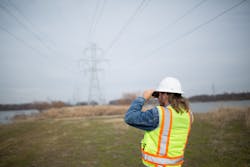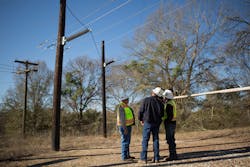Safety Spotlight: Making Safer Decisions Using S.T.A.R.
Incidents are a result of a chain of events that occur when one preventable link was overlooked or unrecognized. Being aware of your surroundings and practicing pre-job briefings every time the conditions change is key to maintaining the safety of yourself and others. Remember to Stop, Think, Ask/Act, Review (S.T.A.R.) for an understanding of the hazards you face.
S.T.A.R. is a powerful tool that we can apply to reduce the chances of being involved in an incident. Efficiency and production are necessary until safety becomes compromised. At some point, we have all felt the pressure to complete work and when we allow a relaxed attitude or external pressures to erode our strong culture of safety, the costs can be unfortunately high.
You control the choice to pressure yourself 100% of the time. Self-checking is useful, regardless of how often you have worked in a particular setting or performed a particular task.
Stop
Stop and ask yourself: “Is what I’m about to do safe? Am I properly trained to perform this job?” These are the critical first questions to answer before you proceed. Do not rush into your tasks without completing this step. Research has repeatedly shown that taking the time to stop and focus increases the odds of success. This step allows us to recognize the potential for injury, property damage, or other types of incidents.
Think
Think about the steps you need to perform before you proceed. Consider these key questions: “Do I have the correct tools to complete this task? Are there any new hazards to identify?” Beyond talking through the steps you are about to take, spend time considering the consequences of your actions. This upfront assessment could be the difference between a successful job or an incident on the job.
Ask/Act
If in doubt about any part of the job or task, take time to ask. Once clarifying questions have been answered, act and complete the job safely, while deliberately following through with your planned steps.
Review
Review the task after you complete it. This step provides the opportunity to verify that results were achieved safely and what you expected to happen, happened. The review stage is important to capture to share the lessons learned for the next time the task must be completed.
Applying S.T.A.R.
A hazard assessment our industry often refers to as a Job Safety Analysis (JSA) will help develop and maintain an ongoing state of situational awareness.
Harvard University defines Job Safety Analysis (JSA) as a “safety tool that can be used to define and control hazards associated with a certain process, job, or procedure. It is a systematic examination and documentation of every task within each job to identify health and safety hazards, and the steps to control each task.”
Job Safety Analyses should always be performed when beginning a task. Do not get complacent. As conditions change, adjust your JSA to match the new hazards and be prepared to share updates with others.
The S.T.A.R. method can be used to guide your JSA planning. Stop and Think about the job before you begin. Make sure you are answering all the questions about the risks of job site conditions before beginning work. Look closely for hazards — including things that could change while you are on the job site, like the weather or others entering your work zone. Assess to determine if you are properly equipped and trained to complete the task safely to the end.
Be prepared to Ask and Act according to the plan you made during the JSA and stop to adjust the plan if the situation changes.
Finally, Review the plan with your team after completing the job to share successes and lessons learned. In doing so you can help raise others' situational awareness and reduce complacency. Our workloads are seldom low, so the chances we will be in an ideal state on the job are as well.
Make it a habit to perform a quick self-check before beginning any job or task and errors will be drastically reduced. Self-checking with the S.T.A.R process is a simple but crucial part of any human performance improvement initiative and when used consistently a powerful safety tool.
The next time you are about to complete a task, Stop, Think, Ask/Act, and Review – it might make all the difference.

